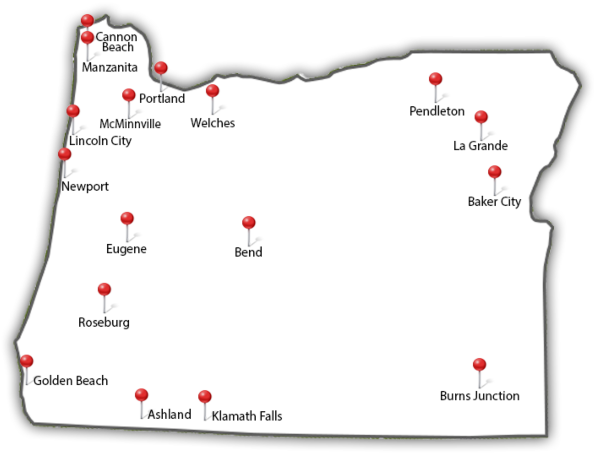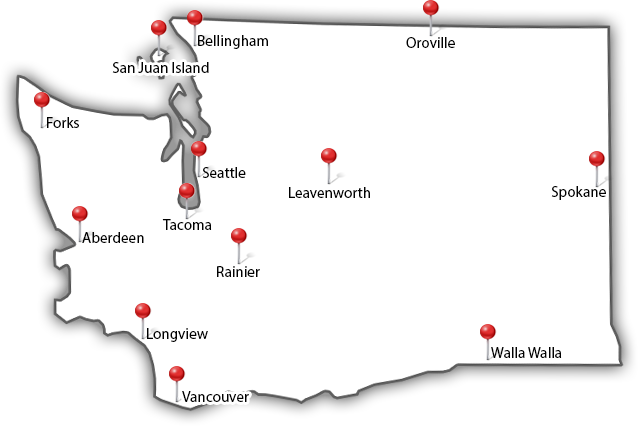The Tree Identification Guide for Oregonians
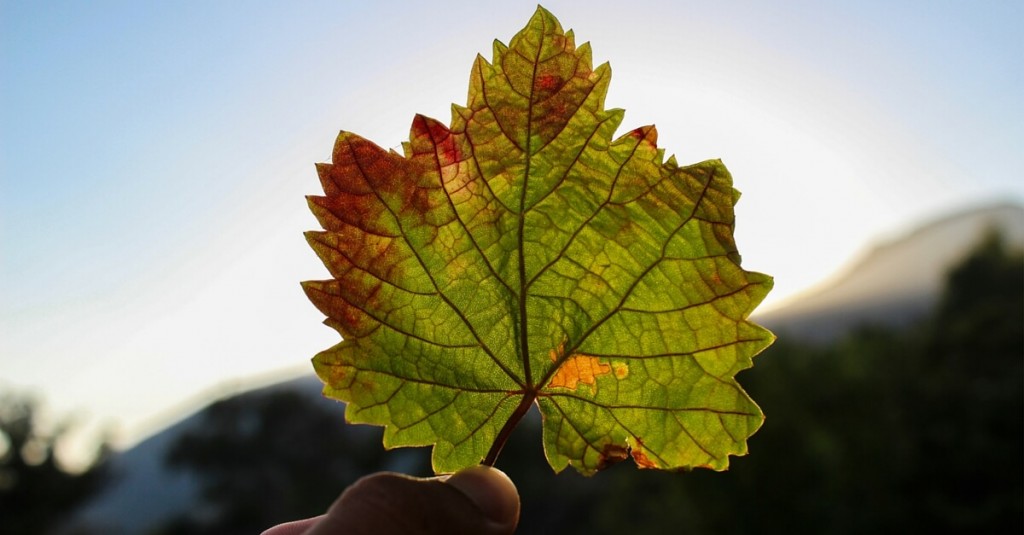
Curious about a tree on your property? Or just want to impress your friends next time you go hiking?
Today, we’ll be talking about Tree Identification 101: how the experts identify trees and the features they look for.
I’ll also show you an easy tree identification tool anyone can use in Oregon.
First, let’s look at a few of Oregon’s most common trees.
Trees You’ll See in Oregon
Oregon is a big state with a diverse climate. Some trees grow really well in western Oregon but not eastern Oregon, and vice versa.
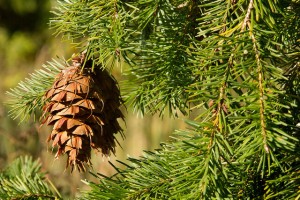 The most common tree statewide is the Douglas fir, Oregon’s state tree. It’s by far the most common tree species in western Oregon, but it’s easy to find them in eastern Oregon too.
The most common tree statewide is the Douglas fir, Oregon’s state tree. It’s by far the most common tree species in western Oregon, but it’s easy to find them in eastern Oregon too.
The Douglas fir is characterized by blunt green pine needles and 3-4” pine cones with pitchfork-shaped brackets.
Other trees you’ll find scattered across western Oregon include the red alder, hemlock, and bigleaf maple.
In eastern Oregon, you’re more likely to see a ponderosa pine, lodgepole pine, western juniper,
or grand fir.
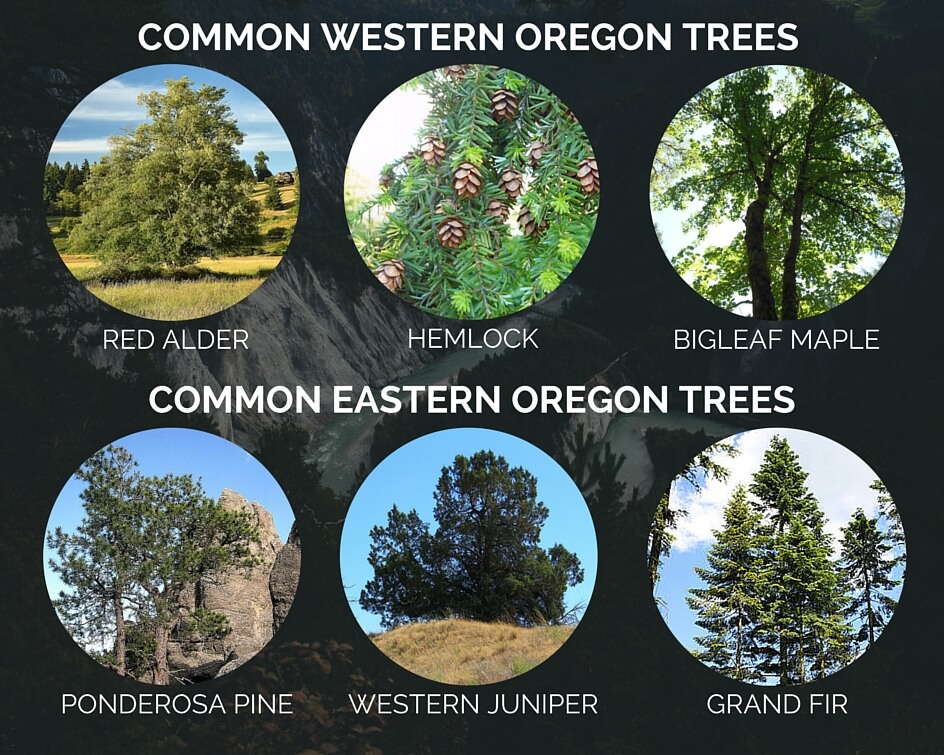
Photos: Rosewoman, Menchi, Jsayre64, Jason Sturner, Bureau of Land Management Oregon and Washington, Crusier
Use this great resource from Oregon State University to check out more of the most common trees in Oregon.
Did you recognize your tree as one of those? If not, or if you want to be sure, keep reading!
Let’s look at the tree identification process and how the experts use it.
How Do Experts Identify Trees?
Oregon is home to so many different species of trees that it takes a lot of practice to learn to identify trees by sight alone. Even tree experts often refer to tree guides.
When experts want to identify a tree, the first thing they look at is its leaves. The shape, size, spacing, and even color of a tree’s leaves can tell you a lot.
Tree Features to Look For
When you examine a tree’s leaves, what should you look for? In a minute, I’ll show you a free, comprehensive tree identification tool you can use to go through the examination process step by step. But first, let’s see the three main features most tree identification guides will ask you to look at.
Conifers vs. Broadleaves
This is step one. Pretty much all Oregon trees can be split into two big categories: conifers and broadleaves.
Conifers are evergreens. They often bear cones and have leaves that look like needles or scales. Broadleaves are deciduous (not evergreen) trees. They have flat, thin leaves and shed them in the winter. Unlike conifers, broadleaves often grow flowers or fruit too.
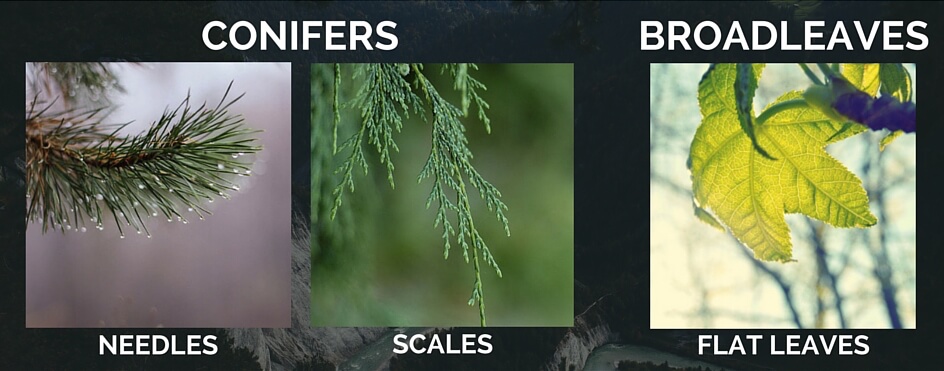
So, the first step in tree identification is to check whether the leaves are needle-like, scaled, or flat and thin.
Spacing of Leaves
The spacing of leaves tells you a lot too. If you’re dealing with a conifer, are the needles fairly evenly spaced along the branch, or are they bunched together in a clump or a fan-like shape? How many needles are in a clump?
You can look for the same pattern with broadleaves. Are the leaves compounded (lots of leaves fanning out from a single twig) or are they simple (single leaves sticking off of twigs or small branches)? See the difference here. Do they alternate along either side of the branch or are they exactly opposite each other?
Answering those questions will help you narrow down your search so you can get closer to identifying your tree!
Shape of Leaves
Finally, look at the shape of the individual leaves. If it’s a conifer with needle-like leaves, how long are the needles? Do they have little pegs or buds on them? Do the needles have different colors?
If it’s a broadleaf, what are the leaves shaped like? Do they have lobes or are they basically oval? Are their edges smooth or jagged? Are they thick and leathery or thin and delicate? Are their undersides a different color? And what kind of fruit accompanies the leaves, if any?
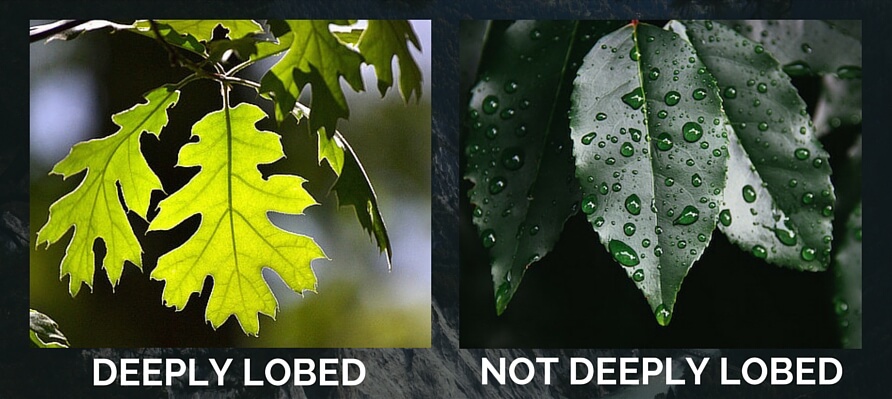
Now you know the basics, you’re ready to use an identification tool to find out the exact species of your tree!
Using a Dichotomous Key
Dichotomous means split into two. A dichotomous tree identification key is a tool that lets you identify a tree by making a series of choices between two alternatives.
You’ll start by telling the key whether your tree is a conifer or a broadleaf. Then you’ll move on to more specific questions from there.
 Here’s what you’ll want to have handy:
Here’s what you’ll want to have handy:
- Access to the internet
- A ruler
- The ability to get up close to the tree you want to identify
Now it’s time to get up close to the tree. If you can, take your tablet, phone, or laptop out to look at the tree, and go through the steps there.
If that’s not possible, take several detailed pictures of the tree before you start using the key. Make sure you get good close up pictures of the tree’s needles and leaves. Take some basic measurements of individual needles or leaves to get a sense for how big they are.
Ready to get going? Click here to start using the Dichotomous key from Oregon State University.
It’s that easy! Just make sure you’re certain about every choice you make before you move on to the next one.
What’s Your Tree?
Are you planning to try the key? Did you already identify your tree? Let us know what kind of tree you identified! And if you ever have questions about the health or safety of any of your trees, give us a call!
Want to learn more about tree identification? Check out these resources:
- Practice using the dichotomous key with a mystery tree
- Search a database of Oregon trees
- Don’t live in Oregon? Try the Arbor Day Foundation’s guide
Photos: Roland Tanglao, ~Cytryna~, James Hillyerd, Tracie Hall, Daniel Lee
blog comments powered by Disqus






